Pacifists no more: Militant Buddhism is on the march in Sri Lanka
As the tectonic plates of Buddhism and Islam collide around the world, some monks feel they have no choice but to turn to nationalism to protect themselves

The Buddhist abbot is sitting cross-legged in his monastery, fulminating against the evils of Islam, when a petrol bomb explodes within earshot. But the abbot, the Venerable Ambalangoda Sumedhananda Thero, barely registers the blast. Waving away the mosquitoes swarming the night air in the southern Sri Lankan town of Gintota, he continues his tirade: Muslims are violent, he says, Muslims are rapacious.
“The aim of Muslims is to take over all our land and everything we value,” he says. “Think of what used to be Buddhist lands: Afghanistan, Pakistan, Kashmir, Indonesia. They have all been destroyed by Islam.” Minutes later, a monastic aide rushes in and confirms that someone has thrown a molotov cocktail at a nearby mosque. The abbot flicks his fingers in the air and shrugs.
His responsibility is to his flock, the Buddhist majority of Sri Lanka. Muslims, who make up less than 10 per cent of Sri Lanka’s population, are not his concern. Incited by a politically powerful network of charismatic monks like Sumedhananda Thero, Buddhists have entered the era of militant tribalism, casting themselves as spiritual warriors who must defend their faith against an outside force.
Their sense of grievance might seem unlikely: in Sri Lanka and Myanmar, two countries that are on the forefront of a radical religious-nationalist movement, Buddhists constitute overwhelming majorities of the population. Yet some Buddhists, especially those who subscribe to the purist Theravada strain of the faith, are increasingly convinced that they are under existential threat, particularly from an Islam struggling with its own violent fringe.
As the tectonic plates of Buddhism and Islam collide, a portion of Buddhists are abandoning the peaceful tenets of their religion. During the past few years, Buddhist mobs have waged deadly attacks against minority Muslim populations. Buddhist nationalist ideologues are using the spiritual authority of extremist monks to bolster their support.
“The Buddhists never used to hate us so much,” says Mohammed Naseer, the imam of the Hillur Mosque in Gintota, Sri Lanka, which was attacked by Buddhist mobs in 2017. “Now their monks spread a message that we don’t belong in this country and should leave. But where will we go? This is our home.”
Last month in Sri Lanka, a powerful Buddhist monk went on a hunger strike that resulted in the resignation of all nine Muslim ministers in the cabinet. The monk had suggested that Muslim politicians were complicit in the Easter Sunday attacks by Islamic State-linked militants on churches and hotels in Sri Lanka, which killed more than 250 people.
Buddhist monks will say that they would never condone violence, but at the same time, they will also say that Buddhism or Buddhist states have to be defended by any means
In Myanmar, where a campaign of ethnic cleansing has forced an exodus of most of the country’s Muslims, Buddhist monks still warn of an Islamic invasion, even though less than 5 per cent of the national population is Muslim. During Ramadan celebrations in May, Buddhist mobs besieged Islamic prayer halls, causing Muslim worshippers to flee. Because of Buddhism’s pacifist image – swirls of calming incense and beatific smiles – the faith is not often associated with sectarian aggression. Yet no religion holds a monopoly on peace. Buddhists go to war, too.
“Buddhist monks will say that they would never condone violence,” says Mikael Gravers, an anthropologist at Aarhus University in Denmark who has studied the intersection of Buddhism and nationalism. “But at the same time, they will also say that Buddhism or Buddhist states have to be defended by any means.”
Given that Theravada Buddhists constitute overwhelming majorities in the five countries where their faith is practiced – Sri Lanka, Myanmar, Cambodia, Laos and Thailand – it might seem strange that they feel so besieged. But Buddhism, whose adherents make up only 7 per cent of the global faithful, is the only major religion whose population is not expected to grow in absolute numbers over the next few decades, according to the Pew Research Centre.
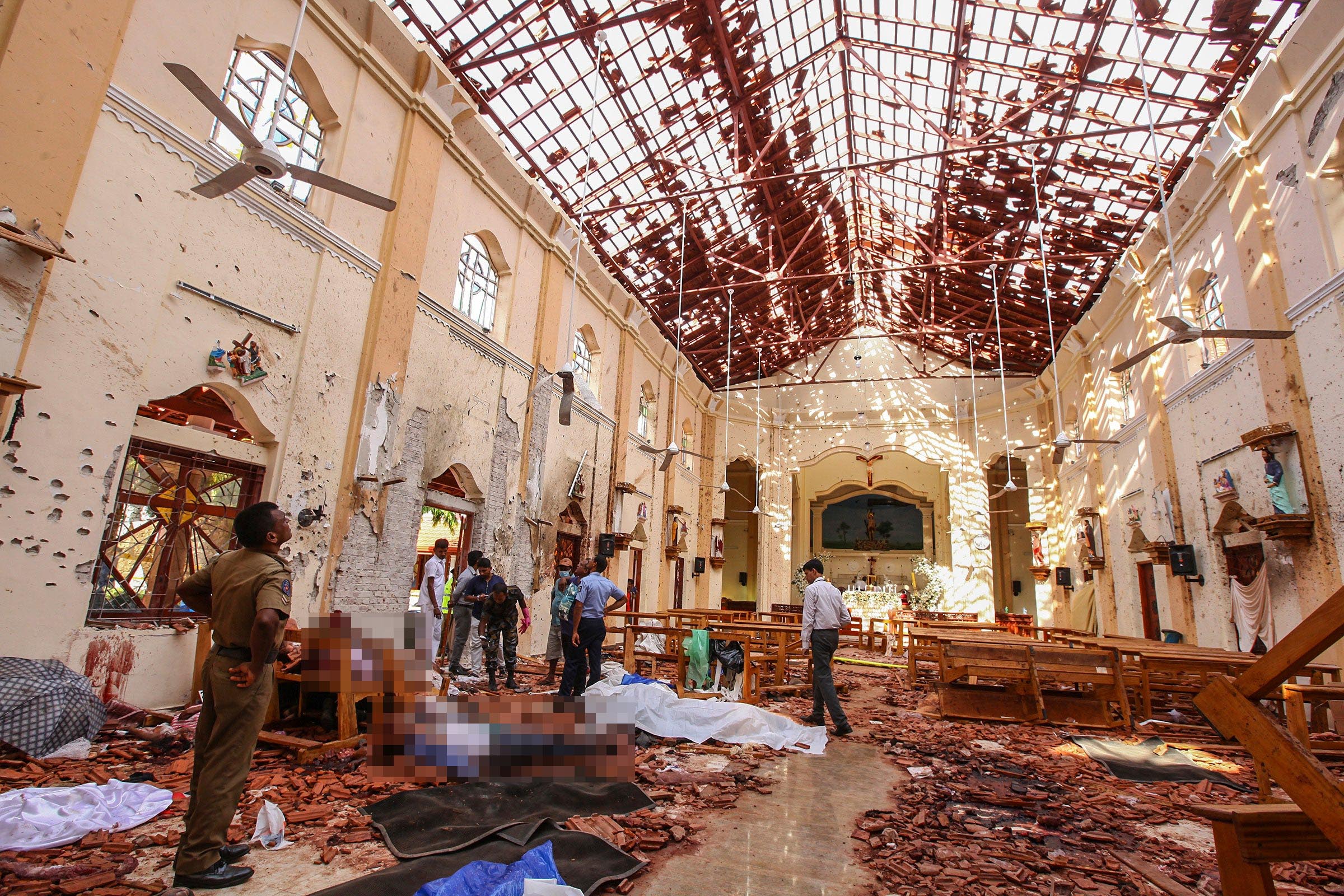
However, the number of Muslims, who make up just under one-quarter of the world’s population, is growing quickly, buoyed by youthful demographics and high fertility rates. By 2050, Pew projects that there will be nearly as many Muslims in the world as there are Christians.
Buddhist monks have made much of that trend in their rhetoric, portraying their faith to be under threat. Sitting in his walled temple compound in Gintota, Sumedhananda Thero gives a bleak prophecy. “If a man dies, it is acceptable,” he says. “But if a race or religion dies, you can never get it back.”
Experts at the United Nations say top Myanmar generals should be tried for genocide. Yet few members of Myanmar’s Buddhist clergy, who have long served as the nation’s moral conscience, have condemned the bloodshed. Instead, they refer to the Rohingya as subhuman invaders despoiling a golden Buddhist land
The military-monastic complex
Thousands of people gathered in Yangon, Myanmar’s largest city, in May as Ashin Wirathu, a Buddhist monk who was once jailed for his hate speech, praised the nation’s army. Since August 2017, more than 700,000 Rohingya have fled Myanmar for Bangladesh. Behind it all was a campaign of ethnic cleansing by the army and its allies, with Buddhist mobs and the country’s security forces subjecting Rohingya Muslims to slaughter, rape and the complete erasure of hundreds of their villages.
Wirathu has rejected the nonviolent teachings of his faith. Military-linked lawmakers deserved to be glorified like Buddha, he said at the rally. “Only the military,” he continued, “protects both our country and our religion.”
At another protest last October, Wirathu slammed the decision by the International Criminal Court (ICC) to pursue a case against Myanmar’s military for its persecution of the Rohingya. Then the monk made a startling call to arms. “The day that the ICC comes here is the day I hold a gun,” Wirathu said in an interview.
Experts at the United Nations say top Myanmar generals should be tried for genocide. Yet few members of Myanmar’s Buddhist clergy, who have long served as the nation’s moral conscience, have condemned the bloodshed. Instead, they refer to the Rohingya as subhuman invaders despoiling a golden Buddhist land.
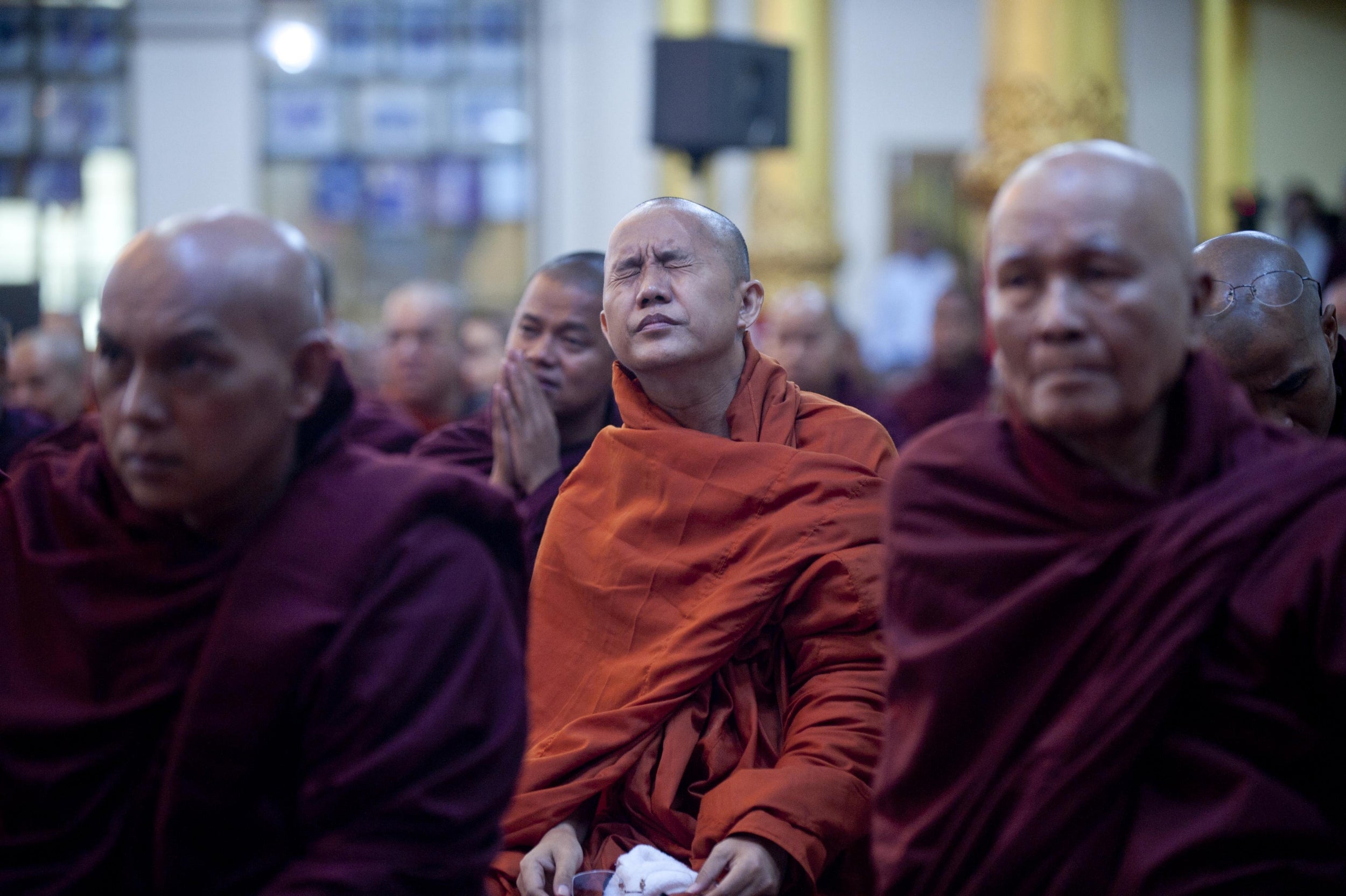
In late May, the civilian government of Myanmar, which shares power with the military, issued an arrest warrant for Wirathu. The charges were not for hate speech against a minority religion. Instead, the monk is being accused of seditious comments against Aung San Suu Kyi, the Nobel laureate who is the nation’s de facto civilian leader. Even though Wirathu has not made much of an effort to hide, and continues to post videos on social media, the police say they cannot find him and will try him in absentia.
Monks like Wirathu inhabit the extremist fringe of Buddhist nationalism. But more respected clerics are involved as well.
There are some monks, albeit a minority, who are countering the monastic hate speech. In Yangon in recent weeks, peace advocates handed out white roses to Muslims in order to promote interfaith harmony
At 82 years old, the Venerable Ashin Nyanissara, known more commonly as Sitagu Sayadaw, is Myanmar’s most influential monk. In 1988, Sitagu Sayadaw was one of a coterie of monks who blessed the nation’s democracy movement, which sent hundreds of thousands of people to the streets in peaceful protest. Myanmar’s military rulers responded by massacring hundreds.
That act of violence stained the junta. Another round of crushed pro-democracy protests led by the country’s monks, in 2007, hastened a political transition in which some power is now shared with Suu Kyi’s civilian government. After the 1988 crackdown, Sitagu Sayadaw slipped into exile in Tennessee before returning home to open Buddhist academies and a monastic university. President Barack Obama and Pope Francis have met with him. Sitagu Sayadaw sits on interfaith councils, and his missionary society runs meditation centres in Texas, Florida and Minnesota.
But just as hundreds of thousands of Rohingya were fleeing their burnt villages, Sitagu Sayadaw sat in front of an audience of army officers and said that “Muslims have almost bought the United Nations”.
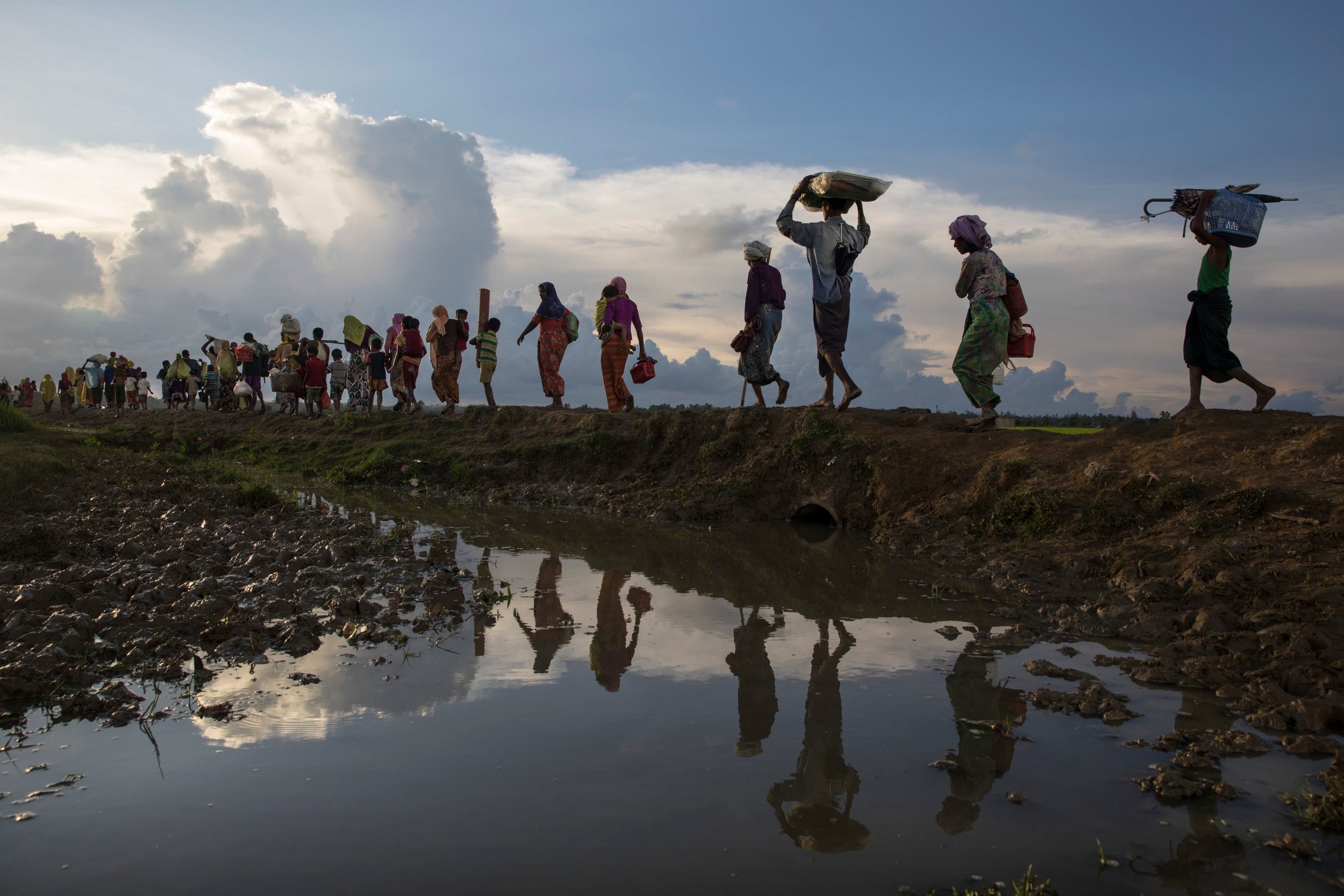
The army and monkhood, he continued, “could not be separated”. Sitagu Sayadaw was pictured in May on a Facebook page linked to the Myanmar military, grinning among soldiers. He has offered up his faith’s greatest sacrifice: an army of spiritual soldiers for the national cause.
“There are over 400,000 monks in Myanmar,” he told the commander of Myanmar’s armed forces. “If you need them, I will tell them to begin. It’s easy.”
It is not just monks who feel the need to guard their faith. This is a time of profound social change in Myanmar, and some women, in particular, are yearning for a moral force to counter what they see as a rising materialism among the nation’s youth. Monasteries, they fear, are no longer as alluring as malls
“When someone as respected as Sitagu Sayadaw says something, even if it is strongly dismissive of a certain group, people listen,” says Khin Mar Mar Kyi, a Myanmar-born social anthropologist at the University of Oxford. “His words justify hatred.”
There are some monks, albeit a minority, who are countering the monastic hate speech. In Yangon in recent weeks, peace advocates handed out white roses to Muslims in order to promote interfaith harmony.
“The extremists are only a small part of Buddhism in Myanmar, but they have loud voices,” says Ashin Sein Di Ta, the abbot of the Asia Light monastery. “We should say clearly that if any monk, even respected ones like Sitagu Sayadaw, advocate killing, they should be defrocked.”
But in a country where senior monks are so respected, it remains hard to question their authority. Prevailing anti-Muslim sentiment worldwide has heightened prejudice, with social media playing a corrosive role. During the height of the junta’s power, unauthorised fax machines were illegal in Myanmar, and the media was censored. Today, much of the population is on Facebook, ill-equipped to sift hyperbole from fact.
“I’ve been interviewing so many monks, and it is clear that Facebook is what has been driving their hate,” says Mar Kyi of the University of Oxford. “Monks learned that Islamophobia existed in the west, and they felt like it justified their feelings.”
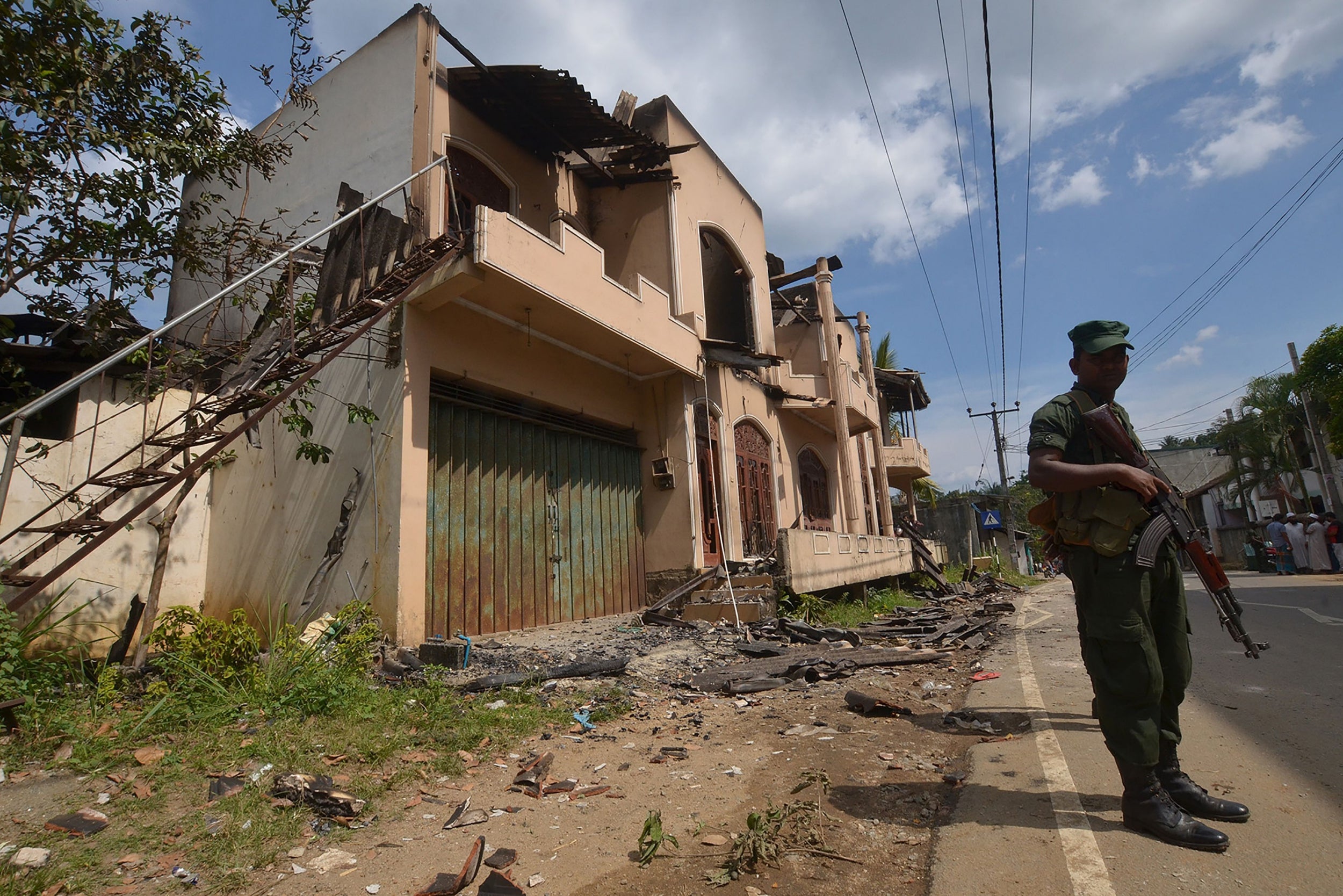
One nation, under Buddha
Spread on social media, this is how the tale goes: once, great Buddhist empires dominated Asia. Then, beginning in the seventh century, Muslim invaders began tearing across the continent. Buddhist rulers in present-day Pakistan, Afghanistan, Bangladesh and Indonesia succumbed to Islam. The indignities continued into this century when, in 2001, the Taliban blew up the giant Buddha statues at Bamiyan in Afghanistan.
It is not just monks who feel the need to guard their faith. This is a time of profound social change in Myanmar, and some women, in particular, are yearning for a moral force to counter what they see as rising materialism among the nation’s youth. Monasteries, they fear, are no longer as alluring as malls. One group that has harnessed this anxiety is the Committee for the Protection of Nationality and Religion, or Ma Ba Tha, which runs Sunday schools and other community events popular across Myanmar. Formed in 2014 with the aim of protecting Buddhism, Ma Ba Tha has pushed successfully for laws that make it hard for Buddhist women to marry outside their faith.
In Myanmar, as in Sri Lanka – where Muslims have been accused of manufacturing underwear that makes Buddhist women infertile or of sprinkling birth control pills into curry consumed by Buddhists – Buddhist figures have often expressed their hatred of Muslims in sexual terms. In 2012, reports that a Buddhist woman had been raped by Muslim men triggered fatal communal clashes in Myanmar. Buddhists in both countries claim that Muslims are waging a “reproductive jihad”.
“There is this idea of a hyperfertile Muslim man with his many wives,” says Iselin Frydenlund, an associate professor of religious studies at the Norwegian School of Theology. “Ma Ba Tha tapped into this trope, and pure Buddhist women were held up as the symbols of the nation who were in danger of rape by Muslim men.”
In fact, it is Myanmar’s armed forces that have used rape as a weapon of war in its battles against various ethnic insurgencies. The United Nations has blamed the Myanmar military for “sexual atrocities reportedly committed in cold blood out of a lethal hatred for the Rohingya.”
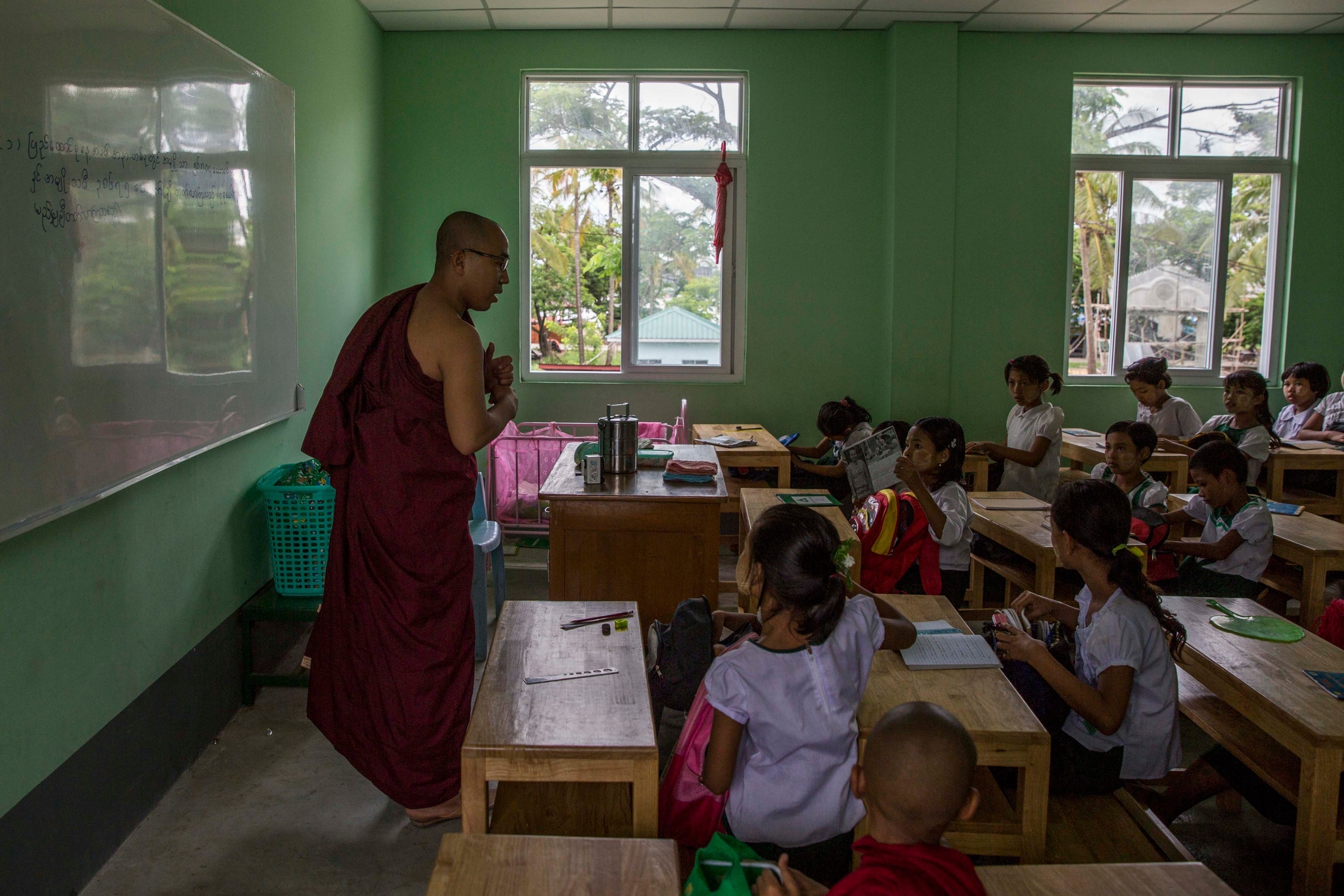
Ma Ba Tha monks reject such findings, and they have been able to continue their hate-mongering even though the group was technically outlawed in 2017. “I don’t think anyone would rape Bengali women because they are ugly and disgusting,” says one Ma Ba Tha monk, U Rarza, referring to the Rohingya by a pejorative term.
The Buddhist right returns
When suicide bombers linked to the Islamic State blew up churches and hotels in Sri Lanka on Easter Sunday, Buddhist nationalists felt vindicated.
“We have been warning for years that Muslim extremists are a danger to national security,” says Dilanthe Withanage, a senior administrator for Bodu Bala Sena, the largest of Sri Lanka’s Buddhist nationalist groups.
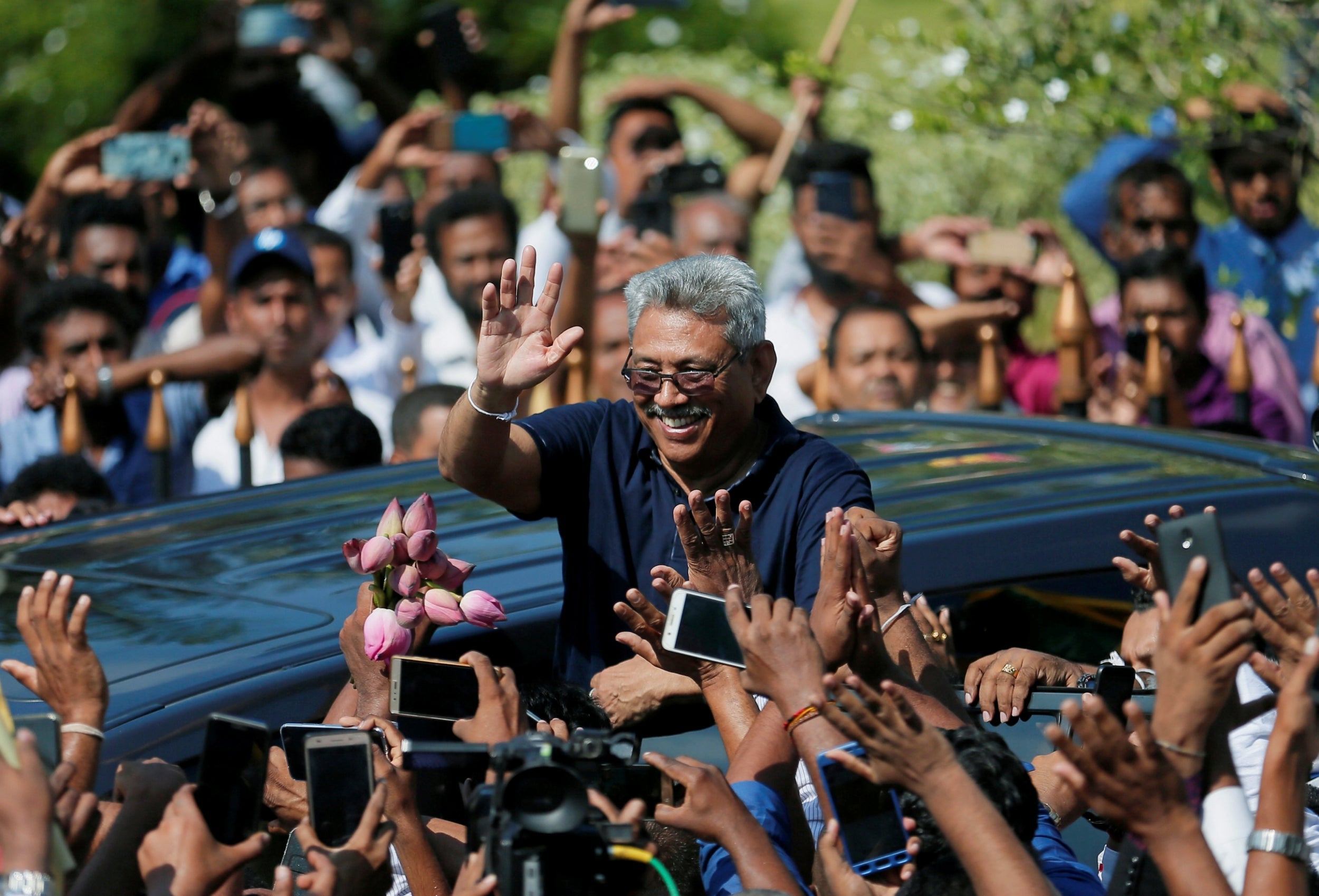
“Blood is on the government’s hands for ignoring the radicalisation of Islam,” Withanage says.
After a few years of moderate coalition governance, a fusion of faith and tribalism is again on the ascendant in Sri Lanka. The movement’s champion is Gotabaya Rajapaksa, a former defence chief who is the leading candidate for president in elections due this year.
Rajapaksa has pledged to protect religion in the country with the longest continuous Buddhist lineage. He is determined to reconstruct Sri Lanka’s security state, which was built during a nearly three-decade-long civil war with an ethnic Tamil minority.

From 2005 to 2015, Sri Lanka was led by Rajapaksa’s brother, Mahinda Rajapaksa, an unabashed nationalist who justified the brutal end to the civil war by portraying himself as the nation’s spiritual saviour.
Temples decorated their walls with pictures of the Rajapaksa brothers. Money flowed for radical Buddhist groups that cheered on sectarian rioting in which Muslims died. One of the founders of Bodu Bala Sena, or the Buddhist Power Army, was given prime land in Colombo, the capital, for a high-rise Buddhist cultural centre. Last year, Bodu Bala Sena’s leader, Galagoda Aththe Gnanasara Thero, was sentenced to six years in prison. But in late May, amid a changing political climate, he received a presidential pardon. On Sunday, he presided over a meeting of thousands of monks intent on making their political presence felt in the upcoming elections.
Before his imprisonment last year, Gnanasara Thero placed his campaign in a historical context. “We have been the guardians of Buddhism for 2,500 years,” he said in an interview. “Now, it is our duty, just as it is the duty of monks in Myanmar to fight to protect our peaceful island from Islam.”
© New York Times
Join our commenting forum
Join thought-provoking conversations, follow other Independent readers and see their replies
Comments
Bookmark popover
Removed from bookmarks